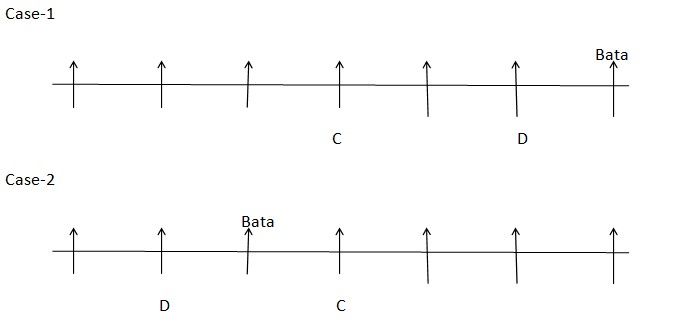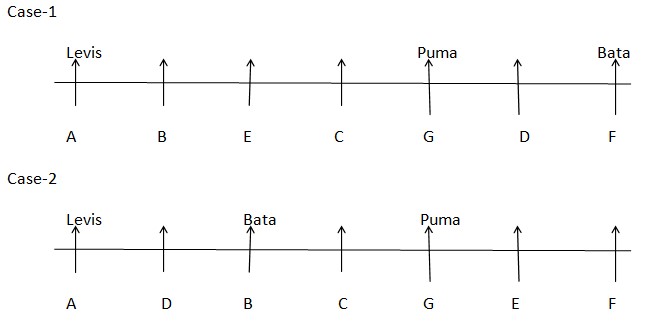Question
Who among the following is an immediate neighbor of
B? Study the following information carefully and answer the questions given below: Seven persons A, B, C, D, E, F and G are sitting in a row facing towards the north but not necessarily in the same order. Each one of them likes different shoes i.e., Reebok, Nike, puma, Levis, adidas, woodland and Bata but not necessarily in the same order. The one who sits immediate right of D likes Bata. D sits 2nd from one of the extreme ends. Only one person sits between D and C. A sits 4th to the left of G, who sits adjacent to C. Only one person sits between F and G, who likes puma. More than three persons sit between A and F. More than two persons sit between the one who likes puma and the one who likes Levis. B sits to the left of E. B is not an immediate neighbor of A. Neither D nor C likes woodland. The one who likes Reebok sits 3rd to the left of the one who likes woodland. E does not like Nike.Solution
As per the given information, the one who sits immediate right of D likes Bata. D sits 2ndfrom one of the extreme ends. Only one person sits between D and C. Here we have two possible cases i.e.  A sits 4th to the left of G, who sits adjacent to C. Only one person sits between F and G, who likes puma.
A sits 4th to the left of G, who sits adjacent to C. Only one person sits between F and G, who likes puma.  Case-2
Case-2  More than three persons sit between A and F. B sits to the left of E. More than two persons sit between the one who likes puma and the one who likes Levis.
More than three persons sit between A and F. B sits to the left of E. More than two persons sit between the one who likes puma and the one who likes Levis.  B is not an immediate neighbor of A. Here Case 1 gets eliminated. Neither D nor C likes woodland. The one who likes Reebok sits 3rd to the left of the one who likes woodland. E does not like Nike. So the final arrangement will be,
B is not an immediate neighbor of A. Here Case 1 gets eliminated. Neither D nor C likes woodland. The one who likes Reebok sits 3rd to the left of the one who likes woodland. E does not like Nike. So the final arrangement will be, 
MIBOR, is calculated by –
Holcim company is based in which country?
Australia cancelled its contract with France and sign up for the AUKUS security pact to purchase ___________.
If A = 2, B = 4, C = 6, and so on, then the number value of PREVENT will be:
Where in India is the headquarters of Citibank India located?
मुद्रास्फीति के समय के दौरान कर की दरों में निम्नलिखि�...
In a year _________ sessions of Lok Sabha are normally held.
Devi Ahilyabai Holkar Airport is situated in which Indian city?
Which country is the largest producer of solar energy?
With which of the following type of loans the term “teaser rate” is associated?
Relevant for Exams:



